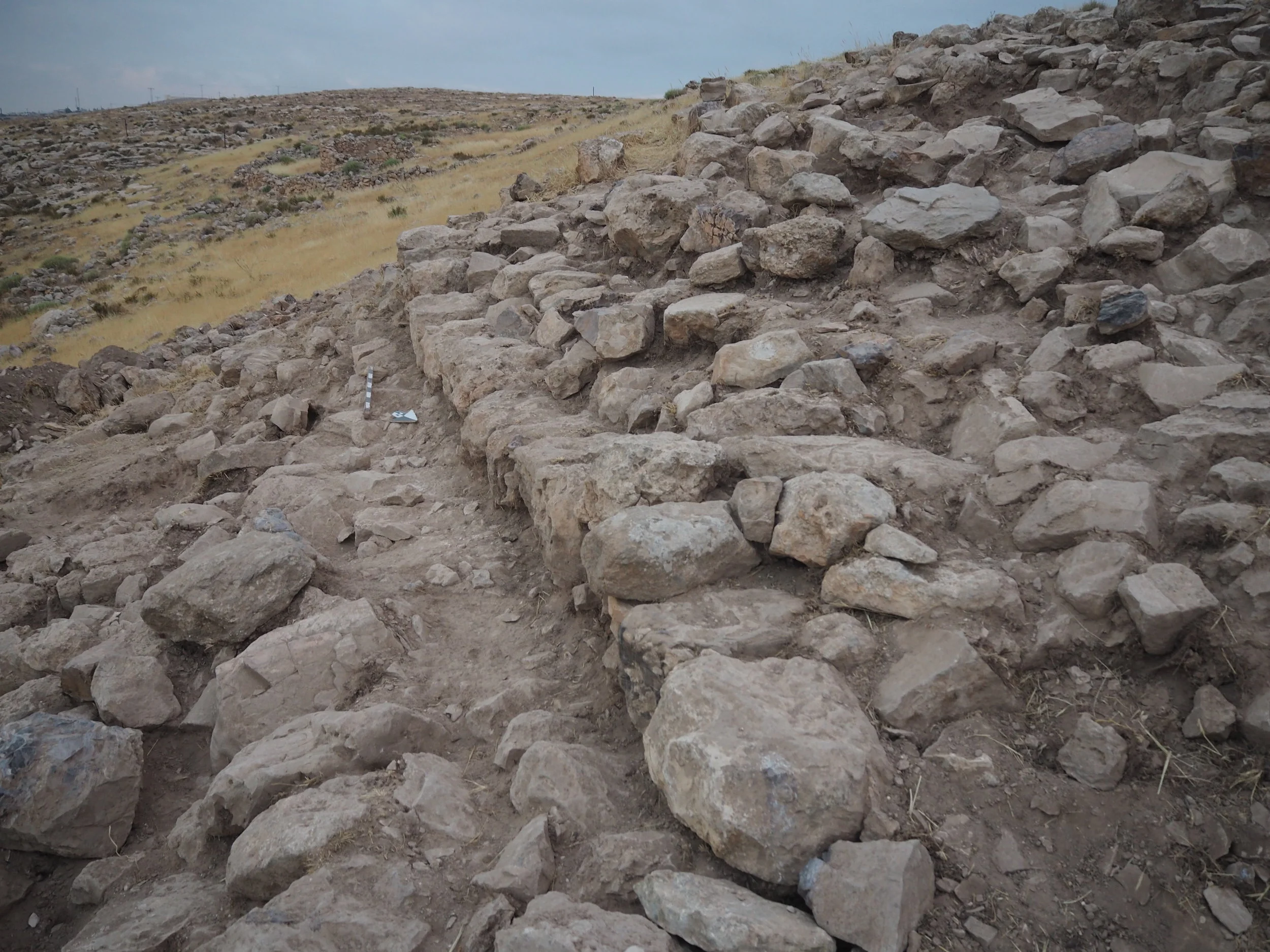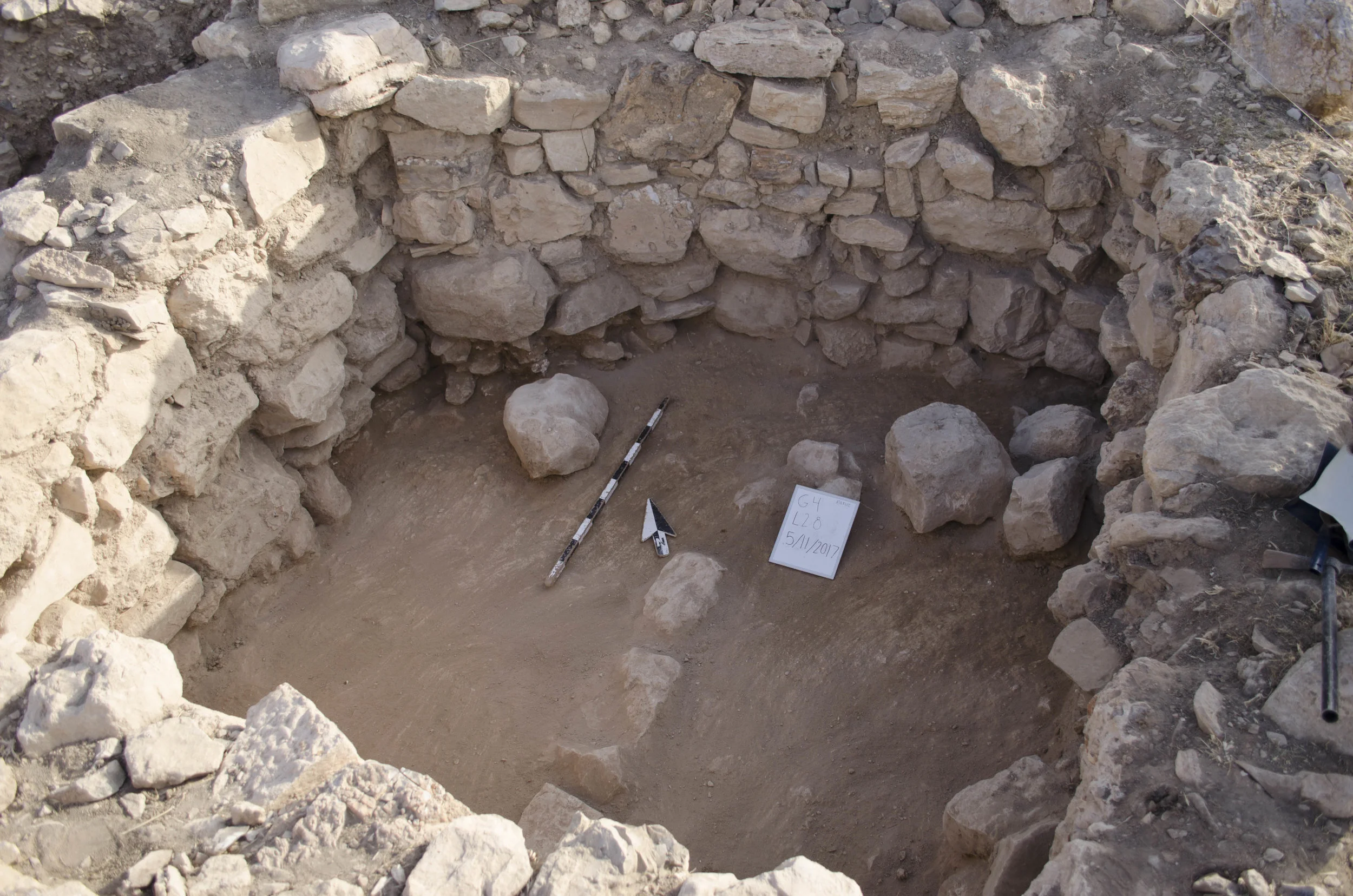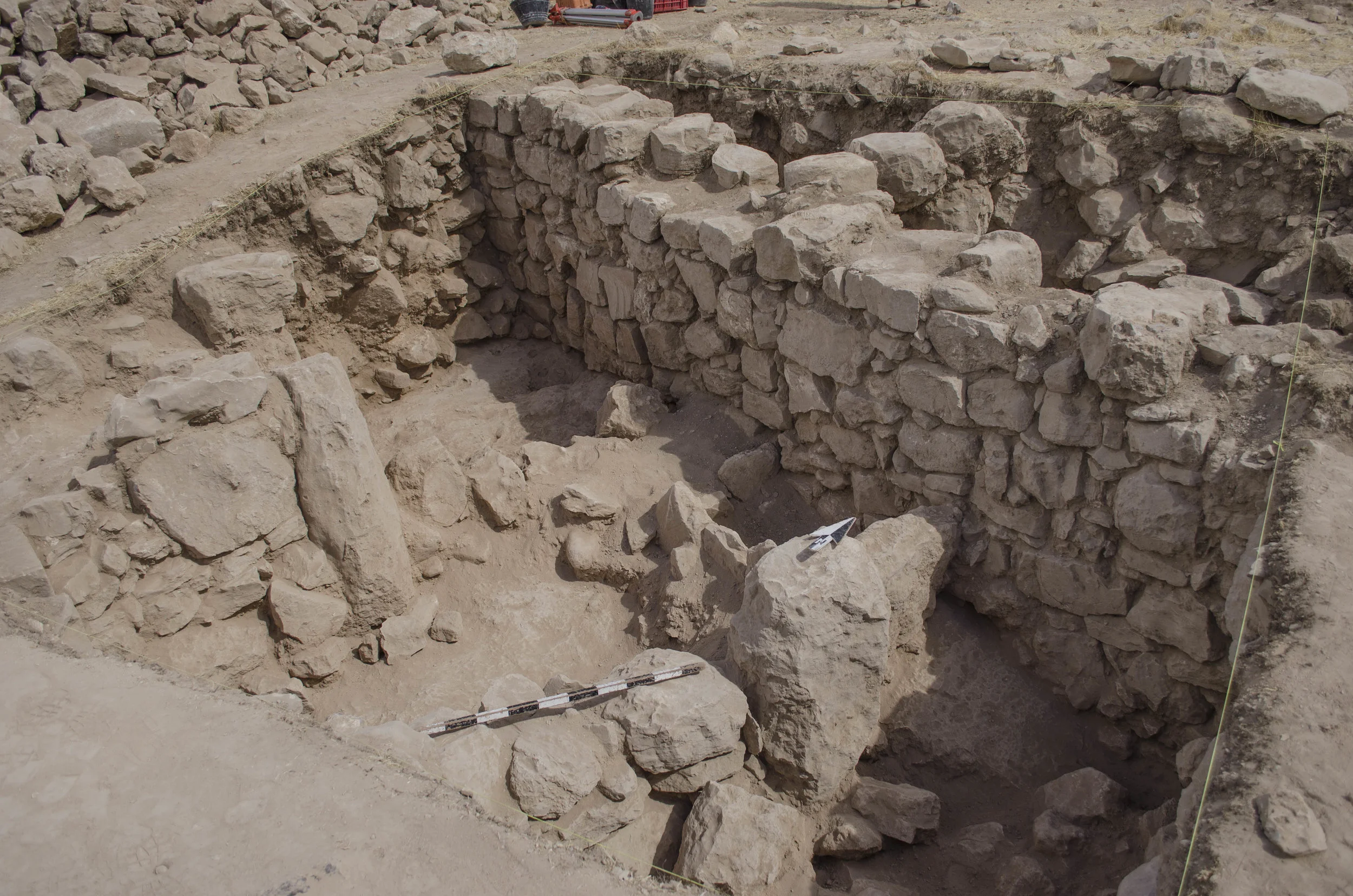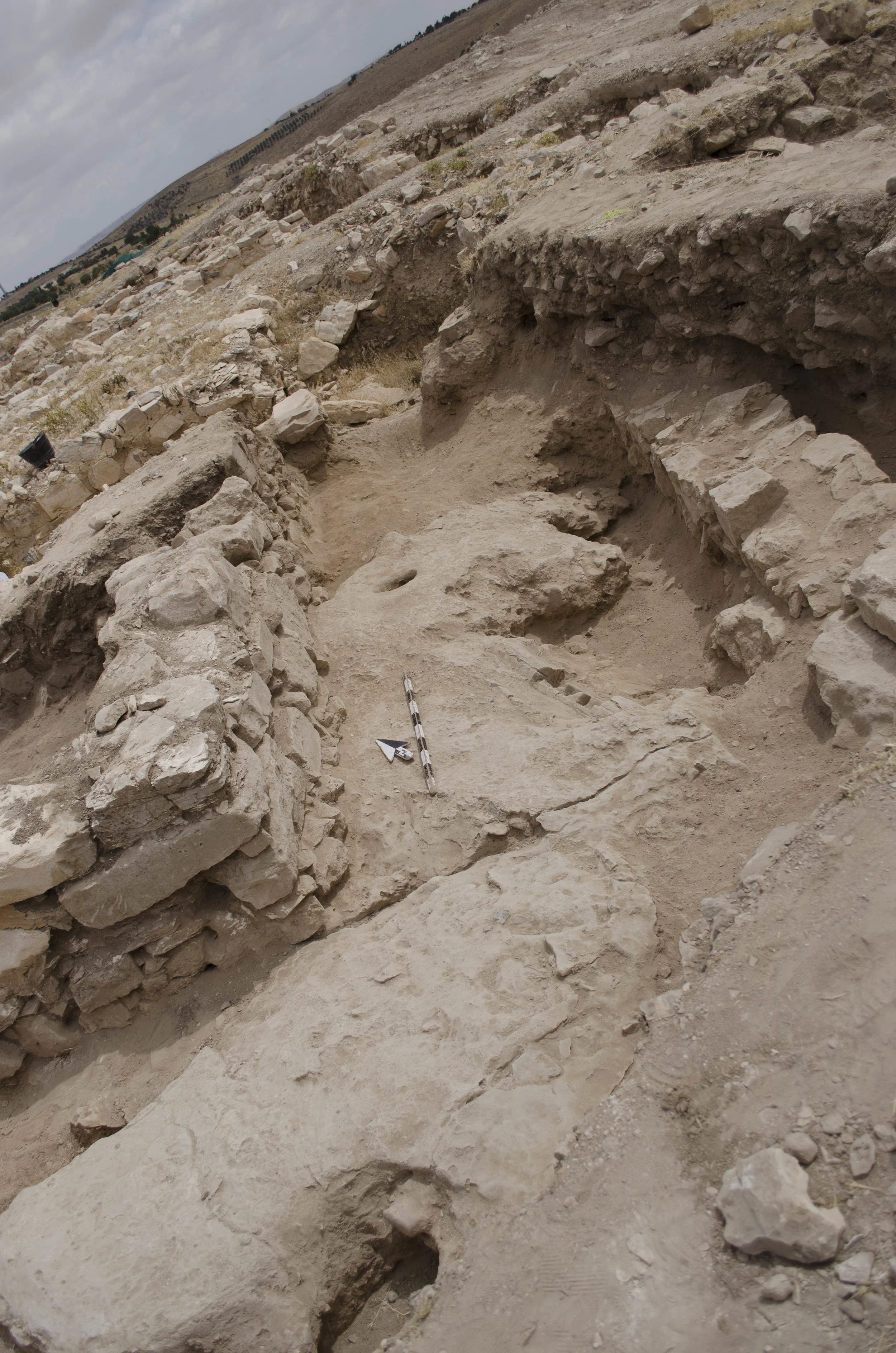The 2016-17 fieldwork primarily centered on the eastern side of the temple complex access area (Field G). In 2015, we noticed the curious existence of a massive stone sequence on the surface, ascending westward up the hill toward the temple complex’s roughly east-west orientation. Thus, the main goal of the 2016-17 seasons was to explore the nature of this step-stone formation. Our preliminary hypotheses included possible steps or stairs leading to the temple complex, terraced agricultural footings, or stone courses used for defensive purposes.
The project was directed by Chang-Ho Ji (La Sierra University) and Aaron Schade (Brigham Young University), along with a team consisting of scholars and students from Brigham Young University, La Sierra University, and Korean Sahmyook University (Michael Duval, Jared Ludlow, Brian Passantino; Junghun Choi, Rebecca Freeman, Jessica Hudson, Choong-Ryeol Lee, Christopher Morey, Steven Moulton, Brandon Prichard, and Jessica Smith) and 15-20 local workers each season. The Department of Antiquities was represented by Mr. Asem Asfour (2016) and Mr. Abdullah al-Bawareed (2017).
Remains of Stairs in Square G2
Within Squares G2-G3 and G7, we identified and exposed roughly 20 separate step courses running to the northeast. These steps were usually situated on beaten earth with some stone fill to secure them. They continued 5-6 meters across the majority of the squares. There were probably more of these courses, but erosion and human damage to the structure have prevented us from assigning more architectural loci to define them. Pottery from the staircase and the beaten earth below the steps were consistently Iron IIA (ca. the ninth century BCE).
Remains of Stairs in Square G3
At this point, there is little evidence of the agricultural function of these staircase structures. Likewise, we are not very convinced they were built for defensive purposes. For instance, a deep probe on the northeast side of Square G3 failed to reveal a solid, continuous layer of stones built on top of each other. Here, we could see the depth of the two courses. The steps appearing on beaten earth have been situated intentionally to create steps, which is counter-intuitive for defensive fortification.
The Field G area was reused during the Iron IIB and mid-Islamic periods, resulting in the extensive destruction of the step-stone structure, particularly in Squares G1, G4, and G6. The residents of the Iron IIB (ca. the late ninth - eighth centuries BCE) used large stone blocks for their architecture. In G6, at least two beaten earth floors were identified with the Iron IIB building in the square. Here, we also unearthed an object that appears to be the remnants of a terracotta statue of a lion’s paw. Square G4 contained a well-preserved mid-Islamic building (ca, the 14th-15th centuries CE), in which we found multiple layers of beaten earth floors with tabun fragments and stone installations.
Mid Islamic Architecture in Square G4
Iron IIB Architecture in Square G6
Apart from Field G, in 2017, we resumed our work at the acropolis area (Fields A and E), excavating Squares A28 and E5. In Square A29 next to A28, previous excavations had revealed a wall line that ran into Square A28. Excavations revealed three wall lines dated to Iron IIA-IIB. The Iron IIB wall was erected to build a small enclosure at the center of A28 that was used for storage or cooking. Two Iron IIA walls were also unearthed, and some were constructed quite solidly using two courses of stone blocks. Between the two Iron IIA walls was bedrock into which the residents dug a cup-hole (with two knobs carved in on the upper part of the hole) and 2-3 lines of natural or man-made water channels, possibly an installation related to the animal sacrifice in the temple. The balk between A28 and A25 (excavated in 2008) was removed to complete the exposure of the Iron IIA walls. This removal exposed the remains of a small rectangular kitchen room with a large grinding-stone installation in situ and an Iron II cooking pot next to it.
Bedrock Exposure between Iron IIA Walls in Square A28
Overall, the evidence from 2016-17 suggests that the kitchen and bedrock area in A28 were originally part of the temple and its courtyard, dated to the early Iron II. This also holds for the stepped-stone formation in Field G. It might be the remains of a massive staircase system ascending to the Iron IIA temple complex at the acropolis. These areas were reused during the Iron IIB period after substantial architectural modifications.
Further, the project team is concurrently planning to return to Khirbat Ataruz in 2019 for continuous work at Fields E, F, and G plus possible new squares on the southwestern side of the acropolis (Field A), where more cultic installations and buildings are presumed to be located.





